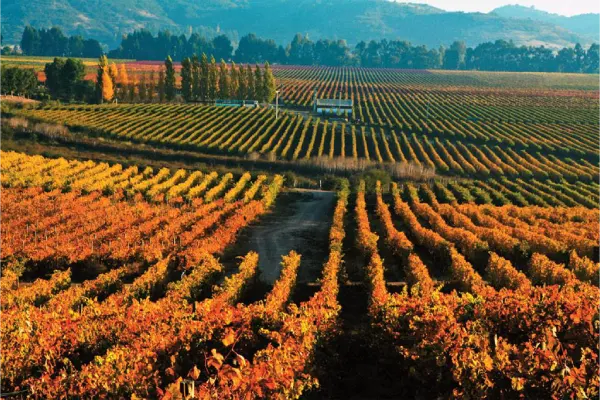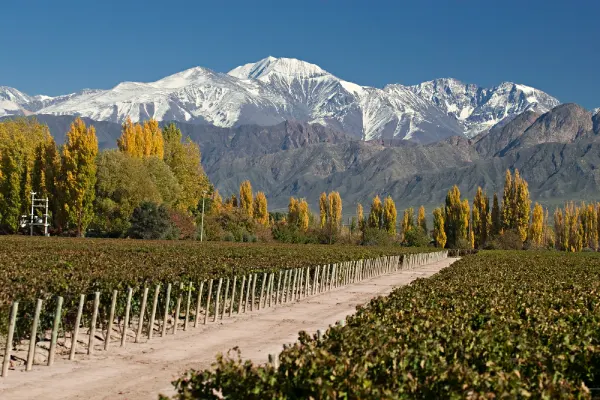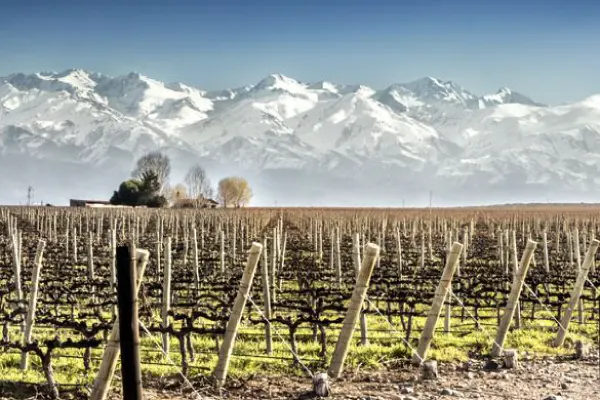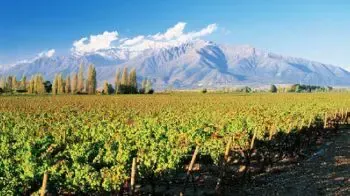Chile is one of the ten largest wine producers in the world, producing some of the best wines in Latin America.
The first vine plantations arrived in Chile at the time of the discovery of America, and production began in Santiago. Initially, the production was made in small quantities, intended only for family consumption and for religious rituals.
It was from the 19th century, with the country's independence and the introduction of new technologies for the modernization of vineyards, that Chile began to be recognized for the quality of its wines. However, it was only at the end of the 20th century, with the intensification of investments in the quality of wine production, that the country began its journey, becoming today the fifth largest exporter of wines in the world.
The best producers in Chile make great wines accessible to anyone, as they have very expensive wines and very cheap wines that are equally good.

Image: UAMtour
Chile
Chile is a country in South America, located between the Pacific Ocean and the Andes. It has a territory outside of what is considered normal, has 4300km in length, and only 175km in width, which makes the country have a very varied climate.
In May 2010, Chile became the first South American country to join the Organization for Economic Cooperation and Development (OECD).
Chile Terroir
Due to its latitude extension, the country has all the climates characteristic of the western regions of the continents, with the exception of the humid and polar tropicals.
In the north of the country the average annual temperature is 18ºC, registering little rainfall. The center, on the other hand, has a Mediterranean climate, with an average annual temperature of 14ºC. The south of the country experiences a drop in temperatures and an increase in precipitation due to the humidity brought by the oceanic winds from the southwest. Finally, the extreme south of the country, due to its high altitude, is dominated by a subpolar climate. Thanks to its very specific soil, climate and location, the terroir expressed by the grapes can vary widely, that is, the same variety can originate wines with a very distinct character, and may be more fruity or acidic according to the region of cultivation.

Image: Viva o Vinho
Chile Wine Regions
Chile has 16 wine producing regions, each of which has a different terroir, which means that the final result of the wine is always different from one region to another.
- Copiapó: is the northernmost wine valley in the country. It has a desert climate, where small vineyards are irrigated with water from natural oasis.
- Huasco: located on the border of the Atacama Desert, it is a relatively new discovery for Chilean wine. Here elegant and complex wines are produced, with natural acidity and mineral notes.
- Elquí: it is a region with arid characteristics. Here, the vineyards knew how to take advantage of the presence of the mountains, planting themselves in rustic soils.
- Limarí and Choapa: Limarí is known for being the Chilean territory with excellent potential to produce Chardonnay, but the Syrah of this area is also recognized worldwide. Choapa, located in the interior of the country, at the foot of the mountains, also produces excellent Syrah.
- Aconcagua: surrounded by the Aconcagua River, which runs from the Andes to the Pacific Ocean.
- Casablanca: is the main cold-weather region in Chile, known for its maritime influence that refreshes the climate. The soils are clay-limestone which makes this area one of the main producers of white wine.
- San Antonio: it is an area of continuous evolution, the soil is very thin and rocky, the result of its proximity to the Pacific Ocean. It is an area well known for producing mineral white wines with high acidity, and fruity red wines with persistent acidity.
- Maipo: is one of the best known wine regions in Chile for producing excellent red wines. It is characterized by having hot summers and cold, humid winters.
- Cachapoal: the northern half of the region is known for producing excellent red wines, making a total of 80% of the region's production. It has several microclimates, which is good for producing different types of wines.
- Colchagua: has evolved a lot in the last 20 years, becoming one of the largest regions in the country. Most of the wine produced is red, with excellent color, and good aging capacity.
- Curicó: has had a wine tradition since the 19th century, and is still one of the most valued wine regions in the country to this day. It presents a diversity of soils of volcanic origin with clay textures. The climate is Mediterranean, with warm days and cold nights.
- Maule: it is the largest wine region in the country, also having the greatest geographical and climatic diversity, which means that there is a wide variety of production of red and white wines. It has a Mediterranean climate and a strong influence of the cold wind that comes from the Andes during the night.
- Itata: it is one of the oldest regions in the country. It has a humid Mediterranean climate, with lower temperatures compared to other regions. The soils are sandy, granitic and rich in minerals.
- Bío Bío: cold and windy region with sandy and rocky soils.
- Cautín: located in the extreme south of the country, it has two sub-regions: Perquenco and Galvarino.
- Osorno: traditionally it is a region of cattle and milk production, with soils of volcanic origin. However, it produces wines with a great mineral character, elegant, intense and a refreshing acidity.
Types of Chilean wine
All the valleys or regions of the country produce wines with different characteristics, which makes it easier to recognize the origin of the wine, it is enough to know the type of wine that is produced in each region.
In general, good Chilean wines are tasty and concentrated, full of ripe fruit, made mainly with French varieties, such as Cabernet Sauvignon, Merlot and Sauvignon Blanc.
Chilean Grape Varieties
For the production of Chilean wines, some grapes are more prominent. Even produced with international grape varieties, Chilean wines gain unique characteristics due to the terroir found in the region.
We can see in detail which grape varieties are produced in each region of the country:
Copiapó - Pisco.
Huasco - Sauvignon Blanc, Chardonnay and Syrah.
Elquí - Syrah and Sauvignon Blanc.
Limarí and Choapa - Syrah, Chardonnay and Pinot Noir.
Aconcagua - Chardonnay, Sauvignon Blanc and Pinot Noir.
Casablanca - Merlot, Syrah, Sauvignon Blanc and Chardonnay.
San Antonio - Sauvignon Blanc, Chardonnay, Pinot Noir and Syrah.
Maipo - Syrah, Merlot and Carménère.
Cachapoal - Carménère.
Colchagua - Carménère, Cabernet Sauvignon and Merlot.
Curicó - Cabernet Sauvignon and Sauvignon Blanc.
Maule - Carménère, Cabernet Sauvignon and Merlot.
Itata - Cabernet Sauvignon, Carménère, Merlot, Tintórera, Semillón, Chardonnay and Sauvignon Blanc.
Bío Bío - Chardonnay and Pinot Noir.
Osorno - Pinot Noir, Sauvignon Blanc, Chardonnay and Riesling.

Image: Vinos de Chile
 Portugal
Portugal Spain
Spain France
France Germany
Germany United Kingdom
United Kingdom Monaco
Monaco



